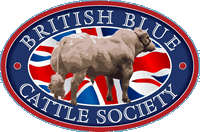Revamp of Johne’s Disease Risk Assessment Will Reward Proactive Farmers
Beef farmers who take sustained action to reduce the prevalence of Johne’s Disease in their herds will have their efforts recognised from 1 January 2013, thanks to a major revamp of the way in which the status of the disease is assessed on individual farms.
Johne’s Disease, caused by the ‘Mycobacterium avium paratuberculosis’ bacterium, is estimated to lose the cattle sectors millions of pounds each year through characteristic ‘wasting’ and loss of production.
The Cattle Health Certification Standards (CHeCS) Johne’s Disease programme, set up in 1999 to provide guidelines for disease control and assurance of the health status of breeding stock, previously rated herds with clear herd tests as ‘qualifying’ or ‘accredited’. However, CHeCS’ executive director Tim Brigstocke says this neither recognised nor rewarded farmers proactively tackling the disease and the term ‘accredited’ was frequently misinterpreted as meaning ‘free of’.
“Our new risk-based approach introduced for 2013 is designed to help herds maintain or move towards clear herd tests through a combination of testing and the implementation of a disease management programme,” he says.
“The scheme will now categorise herds on a scale of 1 (lowest risk) to 5 (highest risk) according to the risk of selling infected animals. To move off the bottom rung (5), an up-to-date health plan needs to be in place for the farm, endorsed by both the producer and his veterinary surgeon.”
Mr Brigstocke explains that unlike infections such as BVD, Johne’s Disease is difficult to deal with and eradication is virtually impossible. “Available tests for Johne’s Disease can only detect the disease as it is progressing, so for every reactor identified, more infected animals in the herd may remain undetected,” he says.
“This means that tackling the disease in infected herds is a long term prospect, involving repeated testing and the implementation of management practices to prevent the spread of infection. The new approach recognises the importance of a sustained programme to reduce disease incidence – but importantly, it also acknowledges that herds with clear tests may still contain infected animals, which is critical in avoiding complacency.”
Bruce Lawson, veterinary advisor to the Welsh Black Cattle Society and coordinator of its herd health programme, adds: “The Welsh Black Cattle Society initiated a Johne's Disease control scheme in 2000, testing through membership and according to the rules of the Premium Cattle Health Scheme. The programme has met with considerable success.
“This new method of assessing Johne's Disease status together with the implementation of a specific health plan has to be a great improvement. It will ensure that herds struggling to control the disease receive appropriate advice and get their status acknowledged when they reduce infection to the required levels.
“For accredited herds, it will soften the blow if they have a positive test, and it will also convey to other breeders that accredited herds are still not without risk.”
The key points of the new regime are:-
Herds with three clear consecutive annual tests of all animals of two years and older with no reactors identified will gain ‘Level 1 status’. Level 1 herds carry the lowest risk of selling infected stock; this category is equivalent to the current ‘accredited’ status. The greater the number of animals in a herd and the longer it has been ‘Level 1’ reduces the risk further.
-
Herds that have had one or more clear herd tests, but have not yet achieved Level 1 status will be categorised as ‘Level 2’
-
Herds where reactors have been identified will become Level 3 or 4 depending on the number of reactors in the herd. It is essential for all herds within Levels 1-4 to have a health plan in place covering the control of Johne’s Disease. The aim of the health plan is to reduce the spread of infection within a herd and reduce the risk of buying in infected animals. It must be updated annually and endorsed by both vet and farmer.
-
Herds that do not have a health plan in place or have no evidence that they are taking steps to control the disease will be placed in Level 5, along with herds that are not carrying out testing. Level 5 herds are considered to be the greatest risk with respect to Johne’s Disease when buying in replacement stock.
-
Any calf at foot of a reactor must not be retained for breeding or sold as a breeding animal. This is because these calves are considered to be more likely to be infected than calves of dams which test negative.
Status |
Definition |
Risk Level 1: |
This is directly equivalent to the previous CHeCS Accredited status. Level 1 status is associated with the lowest risk when buying in stock. Health plan required. |
Risk Level 2: |
Herds with Level 2 status have had one or two clear consecutive herd tests. Health plan required. |
Risk Level 3: |
Herds with Level 3 status have reactors identified at the annual herd test, but these are no more than 3% of the animals tested. Health plan required. |
Risk Level 4: |
Herds with Level 4 status have reactors identified at the annual herd test, and these amount to more than 3% of the animals tested. Health plan required. |
Risk Level 5: |
Any herd that is not carrying out the required testing or does not have a suitable health plan in place automatically falls into this category. Level 5 status is considered to be the greatest risk with respect to Johne’s Disease when buying in stock. |

